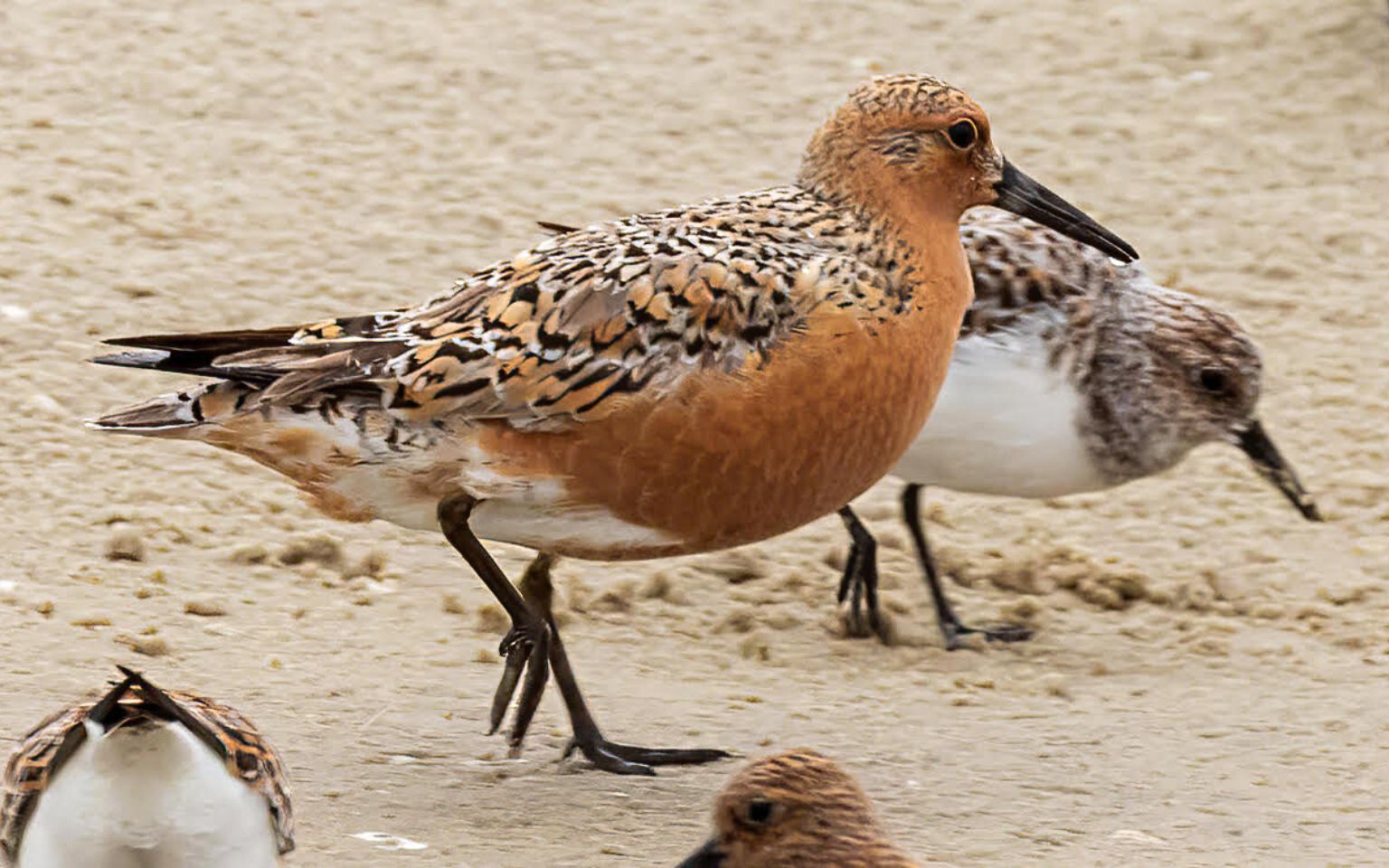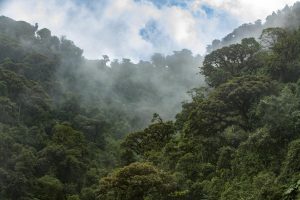Flying 15,000km a year is exhausting – especially if you’re a 10-inch long shorebird. But that’s the distance the Red Knot covers every year. On their epic annual round trip from the Arctic all the way to the base of Argentina, they stop off along the US coastline and central states to feed and gather energy for the next leg of their flight.
Sadly, these birds have seen a dramatic decline in numbers. In 2021, only 7,000 were counted visiting Delaware Bay, a huge loss compared to the 82,000 seen in the early 1980s. And many of these birds were thin and unable to find sufficient food to survive the harsh trip further north. That’s why we’re partnering with Birdlife to bring long-term support to this species and many more.
Red Knots
The Red Knot may be a familiar face to many of us. It’s a guest that we welcome in many coastal states, some flocks even make their way inland to Texas. You’ll spot them by their long beak and rust-red plumage brought out for the breeding season. And if you see a Red Knot, you’re likely to see a lot more, as they flock together in large numbers.
Red Knots are currently headed south, some staying in Florida while others will fly to Argentina or Chile for the winter. During their spring northbound migration to breeding sites in the Arctic, they will pause to feast on horseshoe crab eggs in states like Delaware. These high-caloric eggs promise them enough energy to complete their trip and lay eggs of their own with their partner.
Did you know? Red Knots are monogamous for each season, forming pair bonds upon arrival in the Arctic.
Unfortunately, coastal development and crab harvesting have taken their toll. With less food available, some red knots don’t survive the trip. This means less breeding pairs, less eggs, and a noticeable annual decline in red knot populations.
Coastal Habitat Protection
Birdlife’s 10-year plan to save the Red Knot from extinction begins with their habitats. They are working with local communities and groups to ensure that existing sites are protected, and new sites identified with an eye to restore.
By identifying the key coastal sites that Red Knot feed around, Birdlife can provide additional protections to ensure plenty of food exists for the birds that land there. These sites include Canada’s Nelson River, and in the US: Jamaica and Delaware Bays, Clatsop Beach, and Matagorda Island State Park.
After all, when you protect a key habitat, you benefit tens to hundreds of species. Red Knots share their habitats with other migratory shorebirds like Oystercatchers, Whimbrels, Sanderlings, and more.
Birdlife International
Birdlife is a global partnership of non-profit organizations devoted to protecting birds across the world. As around 2,000 bird species are migratory, Birdlife’s programs to coordinate conservation efforts across countries and continents are essential to protecting endangered bird species.
The BirdLife International Partnership is committed to reversing species decline. Their projects are always strategic, linking birds, habitats, nature, and people to create lasting change. Between on-the-ground actions, leading scientific research, and policy expertise, they have the tools to conserve migratory birds, like the Red Knot.
How can we help?
We are proud to support Birdlife’s plan to bring back the Red Knot – and many more of our threatened shorebirds. Our 1% donation will help them to roll out conservation strategies at the highest priority habitats across the Americas.
As individuals, you can support their work with a tax-deductible donation – as little as $15 dollars can help fund anti-poaching patrols in South America. If you also like to roll up your sleeves and volunteer, learn more by attending a lecture, or just find more online info on birds, click here to find your local Audubon chapter, or here for the American Bird Conservancy. Both these excellent nonprofits are BirdLife Partners in the USA. And for those who want to get out and enjoy the many Bird Festivals that occur across the country, celebrating birds and the beautiful landscapes they inhabit, click here for great ideas.
Without the help of our clients and employees, we wouldn’t be able to support the conservation of species like the Red Knot. Thank you!



